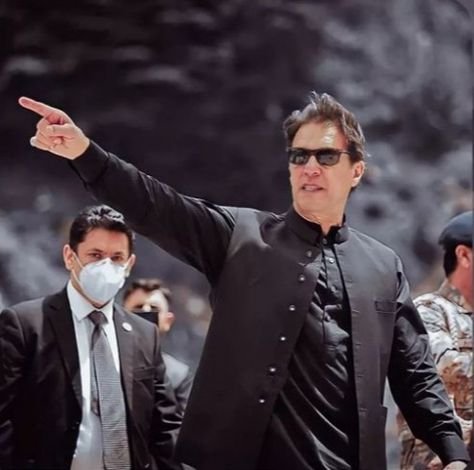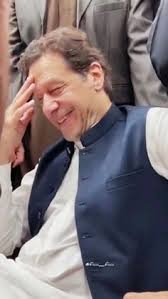
Introduction
Imran Khan, Pakistan’s former Prime Minister, rose to power in 2018 with a promise to create a “Naya Pakistan”—a new Pakistan that would be free from corruption, economic instability, and social injustice. His vision resonated with millions of Pakistanis who were disillusioned with the status quo, leading to a historic victory for his party, Pakistan Tehreek-e-Insaf (PTI). However, the path to turning this vision into reality was filled with significant challenges. This blog delves into Imran Khan’s vision for Naya Pakistan, the policies he introduced to achieve it, and the hurdles his government encountered along the way.

Imran Khan’s Vision for Naya Pakistan
Imran Khan’s vision for Naya Pakistan was built on the pillars of justice, transparency, and accountability. He aimed to create a welfare state modeled after the principles of the State of Madinah, emphasizing social justice, economic equity, and the rule of law.
1. Eradicating Corruption:
Imran Khan promised to root out corruption, which he identified as the primary cause of Pakistan’s economic woes. He vowed to hold the powerful accountable and recover looted national wealth.
2. Economic Reform:
Khan envisioned an economically self-reliant Pakistan, focusing on reducing the country’s dependence on foreign loans and aid. He aimed to increase revenue through tax reforms, broadening the tax base, and encouraging investments.
3. Social Welfare:
A key component of Naya Pakistan was the establishment of a robust social welfare system. Khan aimed to uplift the poor and marginalized through programs like Ehsaas, which focused on poverty alleviation, health, and education.
4. Justice and Rule of Law:
Khan emphasized the importance of a fair and transparent judicial system where laws are applied equally to all citizens, regardless of their social or economic status.
5. Education and Health:
Improving education and healthcare was central to Khan’s vision. He aimed to reform the education system to provide equal opportunities for all and sought to improve public healthcare services.

Policies Introduced to Achieve Naya Pakistan
- Anti-Corruption Initiatives
Imran Khan’s government established the Accountability Courts and strengthened the National Accountability Bureau (NAB) to pursue corruption cases. The government also launched an asset recovery unit to track down assets acquired through illicit means.
- Economic Reforms
The government implemented a range of economic policies, including tax reforms, austerity measures, and initiatives to boost exports. The introduction of the “Roshan Digital Account” allowed overseas Pakistanis to invest in the country more easily. Khan’s administration also secured a $6 billion bailout package from the International Monetary Fund (IMF) to stabilize the economy.
- Social Welfare Programs
The Ehsaas Program was launched as the flagship social welfare initiative, focusing on financial assistance, healthcare, and education for the underprivileged. Under this program, the government introduced the Sehat Sahulat Card to provide health insurance to low-income families.
- Education Reform
The Single National Curriculum (SNC) was introduced to standardize education across the country, reducing disparities between private and public schools. The government also focused on increasing access to education for girls and children in remote areas.
- Healthcare Initiatives
The government expanded the Sehat Sahulat Program, providing health insurance to millions of low-income families. The health sector was also targeted for reforms to improve service delivery and infrastructure.
- Environmental Policies
Imran Khan also prioritized environmental sustainability through initiatives like the “Billion Tree Tsunami” and “Clean Green Pakistan,” aiming to combat climate change and improve urban cleanliness.

Challenges Faced in Realizing Naya Pakistan
- Economic Instability
Despite efforts to stabilize the economy, Khan’s government faced significant economic challenges, including high inflation, rising unemployment, and a growing debt burden. The IMF’s stringent conditions for the bailout package also limited the government’s fiscal space, leading to public discontent.
- Political Opposition
Khan’s anti-corruption drive was met with resistance from political opponents, who accused his government of political witch-hunting. The opposition parties, forming an alliance under the Pakistan Democratic Movement (PDM), launched protests and campaigns to challenge Khan’s legitimacy.
- Governance and Bureaucratic Hurdles
Implementing reforms proved difficult due to entrenched bureaucratic inefficiencies and resistance to change. The slow pace of reform in key sectors frustrated both the government and the public.
- COVID-19 Pandemic
The outbreak of COVID-19 in 2020 added a new layer of challenges, forcing the government to divert resources and focus towards managing the pandemic. While Khan’s administration was praised for its handling of the pandemic, the economic impact was severe, exacerbating existing challenges.
- Judicial and Media Challenges
Khan’s relationship with the judiciary and media became strained over time. His government was accused of pressuring the judiciary and curbing media freedom, which led to widespread criticism both domestically and internationally.
- International Relations
Navigating Pakistan’s foreign relations, particularly with neighboring India and Afghanistan, presented significant challenges. The Kashmir issue, in particular, strained relations with India, while the situation in Afghanistan remained volatile, affecting Pakistan’s security and economic interests.

Conclusion
Imran Khan’s vision for Naya Pakistan was ambitious and resonated with the aspirations of many Pakistanis. His government introduced several significant policies aimed at achieving this vision, particularly in areas like anti-corruption, social welfare, and economic reform. Despite the ambitious goals, the path to achieving them was fraught with obstacles. Economic instability, political opposition, and the unforeseen impact of the COVID-19 pandemic were major hurdles that complicated the realization of Naya Pakistan. As Pakistan continues to navigate these challenges, the legacy of Imran Khan’s vision for Naya Pakistan will be a topic of debate for years to come.
